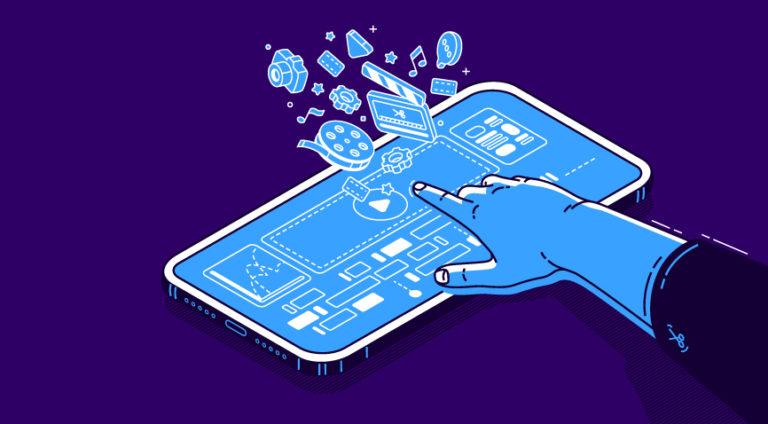Content Distribution Strategies: A Must For Every Marketer

Imagine you’ve tried hard to create great content for your business. After all that effort, it doesn’t get the expected results and gets lost on the web. You would probably think that your content is not up to the mark. While that may be a possibility, there can be other reasons such as improper content distribution, not reaching the target audience, the wrong algorithm, etc.
This is where good content distribution strategies come into play. Once you understand how to plan and execute a content marketing distribution plan, content marketing becomes a much easier task. So, let’s shed light on what content distribution is and how it works?
Defining Content Distribution
Content distribution is nothing but the process of sharing, publishing, and promoting content in different formats via different media, social media platforms, for instance.
A content distribution plan is crucial for any digital marketing plan. When you have one in place, you will:
- Reach your target audience
- Improve your brand’s awareness
- Build a database of loyal consumers of your content
- Consistently encourage call-to-action on your content for your products or services
With a proper content distribution strategy, your content can get more shares on social media platforms, find an increase in your web traffic and see increased engagement and conversations in your social networks.

The number of content distribution platforms is growing by the day, but the main content distribution channels are:
Paid media
Paid channels are when you pay to distribute your content on specific channels.
Owned media
Owned channels are the content properties that you have control over regarding when and how content is published on your channels. These include your website, blog and social media profiles, email newsletters, and mobile publishing apps. Here are the different types of owned media channels.
Blog/website
To achieve more from your content, develop a proper plan to promote it across different channels you own. After publishing your content, you can go further than just sharing it on your social media platforms for more engagement.
For example, you can add tweetable parts from your article along with some insightful and useful information that your readers can share easily. You can use various tools to provide these extracts with a link that will redirect the reader to their Twitter accounts to easily and quickly share your content. This ease of sharing is essential as you don’t want your readers to jump through hoops to share your content.
Email newsletters
Email newsletters are another great example of owned media channel. These are particularly great for curating content around a specific topic that is relevant to both your audience and brand.
For instance, if you’re selling an AI writing tool, your newsletter can include links to various blog posts on your website showcasing the benefits of that tool as well as other uses of it.
Earned media
Earned channels are those through which third parties promote or share your content. Customers, journalists, bloggers, and anyone who freely shares your content are examples of third parties — hence the term ‘earned.’

How to Choose the Ideal Media for Content Promotion
You have a lot to consider when to determine where, how, and when to promote your great content. It’s a given that paid channels work the quickest but require some investment to get and sustain the results.
Earned and owned media are organic channels that may make you wait for the first results to be achieved. That said, these results tend to be quite stable and sustainable. Ideally, you should be finding a healthy balance between them.
What you choose also depends on the type of content since not every format will fit every channel. Furthermore, you also need to take the funnel stage into account. For instance, an ungated How-to article driving a ton of organic traffic will most likely not bring forward as many leads if you link to it from a paid advertisement.
Content Distribution Marketing Channels
Let’s look at the various content distribution marketing channels you can use.

1. Google ranking
While it takes time to gain visibility on search engines, it is critical to focus your efforts on Google as a channel because people trust websites with a high Google ranking.
2. Press releases
While a 2014 Panda update means that press releases will no longer result in higher organic rankings, they are still a very effective in conveying new, helpful, and valuable trade information.
3. Social media (paid and organic)
With so many people using social media platforms, it makes sense to use social media for content marketing and distribution strategy. Furthermore, putting impactful content on social media may result in it going viral!
4. Email marketing
Email addresses gathered through customer subscriptions on your website are a gold mine if you want to target your campaigns to specific topics. Email allows for one-on-one interaction and builds rapport, which is essential for future sales.

5. YouTube
Youtube, which has become the world’s second-largest search engine, is at the top of the list for video content distribution. It’s essential for ‘how-to’ content, product demo videos, and when you want to increase the shareability of your content.
6. Influencer outreach
This entails asking people with industry clout to leave comments on your website or share your content on their social media platforms. This method works because readers regard influencers as authority figures in their respective fields of expertise, and your brand will be viewed as an authority on the subject by association.
Content Distribution Strategies: 4 Effective Tips
1. Audience research
The best way to start any content distribution strategy is by conducting audience research. You want your content to reach the right audience on the internet.
Begin by researching your audience to know exactly who they are, the type of content they’re looking for, and where they spend their time online. To determine your ideal audience and customer, creating buyer personas is wise. You can then map the customer journey to know which type of content is necessary to go along the path to purchase.
Once you have determined your ideal audience, you can segment and analyze them. This includes your social media followers, email list subscribers, and website visitors. You can use Google Analytics to gather data about the visitors to your website. Most social media platforms come with in-built analytics to get follower insights.

You also need to be analyzing your existing content. Are there any distribution channels or content types that are performing better? For instance, are certain types of content driving more shares on social media platforms or backlinks than the rest? Doing this will reveal the type of content that your audience is the most excited about.
Lastly, ensure you’re analyzing your competitor too. See the type of content they share the most, the topics on their website which receive the most engagement, etc. Remember, your content will perform better only if you keep gathering vital information about your audience.
2. Establish goals and KPIs
Before creating any content or plan, you must determine your content distribution marketing goals and KPIs. For instance, if increasing website traffic is your goal, then a vital KPI would be to see the number of visitors your website gets in a set time period. Additionally, you would want to track the types of content-generating organic traffic leading to conversions.
If lead generation is your goal, you need to track the overall number of leads, the content pieces generating leads, and the qualified lead percentage.
The main objective of outlining your business goals is to make them as specific as you can. A few excellent examples of effective KPIs include:
- Leads: Increasing sales qualified leads by 10% over three months
- Brand awareness: Ensure new user website visits by 25% in a six-month period
- Marketing: 10% reduction in pay-per-click spend by evaluating which content works well with the audience
3. Create a content calendar


It’s necessary to have a content calendar as a part of the overall content marketing strategy. Having one will ensure that you always have an up-to-date list of every content piece you’re going to publish, the exact date and time of when you’ll publish it, and the distribution channels needed to publish it.
4. Performance measurement
After publishing your great content, you must measure its results and use that data to optimize your future and existing content. This is where your goals and KPIs come in; the metrics you measure should reach that as closely as they can or exceed it.
If you find a particular content piece or channel underperforming, you need to know whether it is the channel, the content, or a combination of the two. After that, you can either modify your strategy or improve your content to make it more valuable to your readers.
Key Takeaways
- Some examples of content distribution channels are paid media, owned media, and earned media.
- Every marketer’s content distribution methods include YouTube, press releases, influencer outreach, social media, etc.
- One should have a proper content distribution plan to allocate the resources to create and promote that content appropriately.
- Audience research, establishing goals and KPIs, creating a content calendar, and measuring your content performance are some important content distribution strategy tips.
Conclusion
Great content is useless if no one consumes it. The content distribution plan is an important piece of the content marketing puzzle.
You waste resources by not focusing on your audience. A solution to this problem can be found in:
- Rethinking your content distribution strategies to find better ways to distribute content within your limited advertising budget.
- Conduct in-depth customer data analysis to learn more about your customers, their interests, and interactions with your brand. This analysis allows you to categorize customers into groups: loyal customers, frequent buyers, and uninterested customers.
- Build personas to help you understand your audience. Define their age, expertise level, ambition, interests, and the platform they are likely to use from the above-discussed content distribution channels.

FAQs
Content distribution is nothing but the process of sharing, publishing, and promoting content in different formats via different media.
A content distribution plan is crucial for any digital marketing plan. When you have one in place, you not only reach your target audience but also improve your brand’s awareness, build a database of loyal consumers of your content, and consistently encourage call-to-action on your content for your products or services
The channel through which you share and promote the content you create is a content distribution channel. This can include websites, blogs, and social media channels.
About 25% to 30% of your marketing budget is recommended to be dedicated to your content marketing strategy.
The distribution of content is an essential piece of content marketing. It is also vital to increase brand awareness, gain loyal followers, and encourage your readers to click, act, and become customers. Use these tips and tools for content marketing distribution to get your content in front of your target audience.
Latest Blogs
Explore how Google’s 2025 AI search updates triggered ranking chaos. Learn actionable strategies to adapt your SEO for AI Overviews, zero-click searches, and SERP volatility. Stay ahead now.
Learn how to rank on AI search engines like ChatGPT, Perplexity, and Gemini by optimizing your content for authority, structure, and relevance. Stay ahead in AI-driven search with this strategic guide.
Explore the best healthcare SEO services for your medical practice. Improve online visibility and effectively reach more patients in need of your services.


